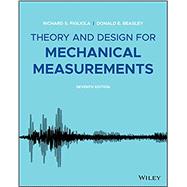Theory and Design for Mechanical Measurements merges time-tested pedagogy with current technology to deliver an immersive, accessible resource for both students and practicing engineers. Emphasizing statistics and uncertainty analysis with topical integration throughout, this book establishes a strong foundation in measurement theory while leveraging the e-book format to increase student engagement with interactive problems, electronic data sets, and more. This new Seventh edition has been updated with new practice problems, electronically accessible solutions, and dedicated Instructor Problems that ease course planning and assessment.
Extensive coverage of device selection, test procedures, measurement system performance, and result reporting and analysis sets the field for generalized understanding, while practical discussion of data acquisition hardware, infrared imaging, and other current technologies demonstrate real-world methods and techniques. Designed to align with a variety of undergraduate course structures, this unique text offers a highly flexible pedagogical framework while remaining rigorous enough for use in graduate studies, independent study, or professional reference.








